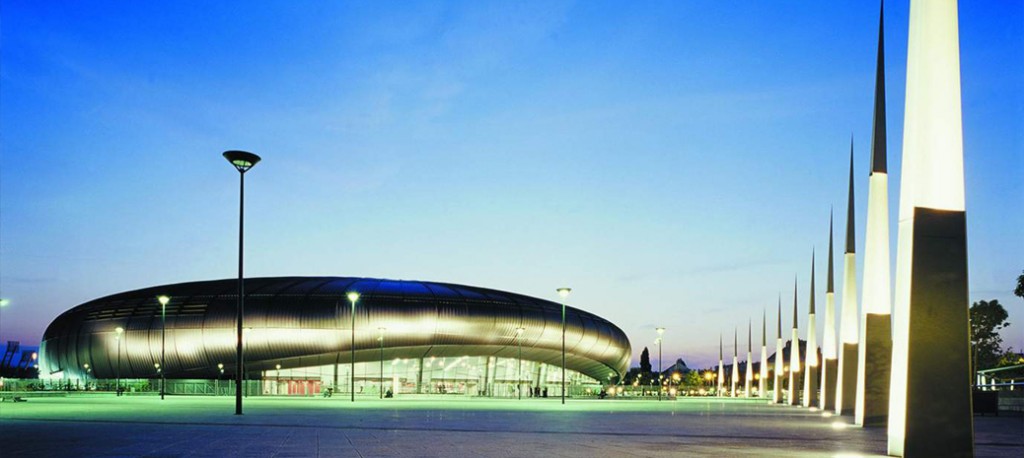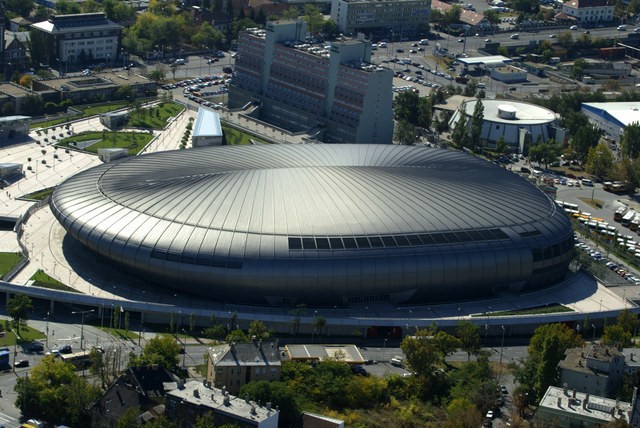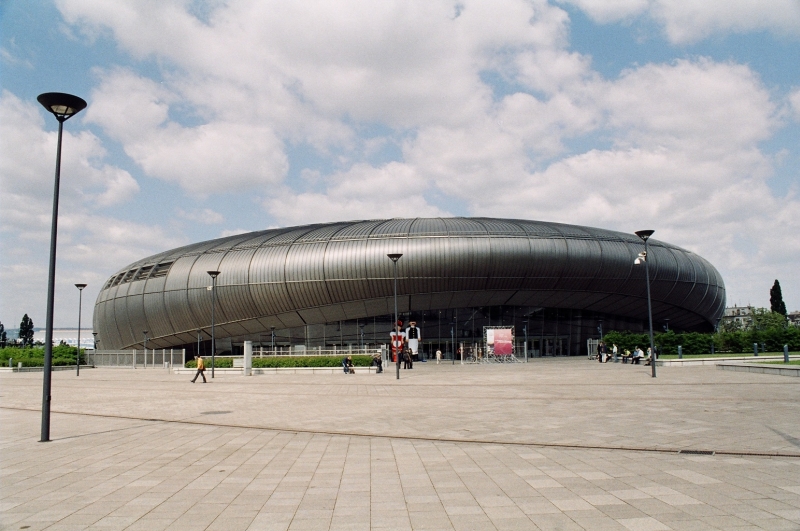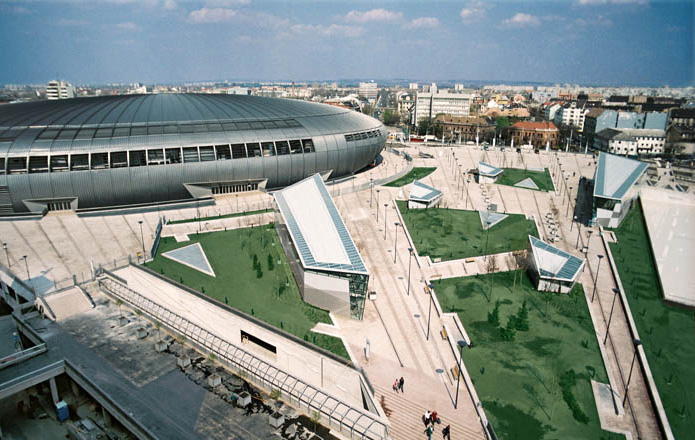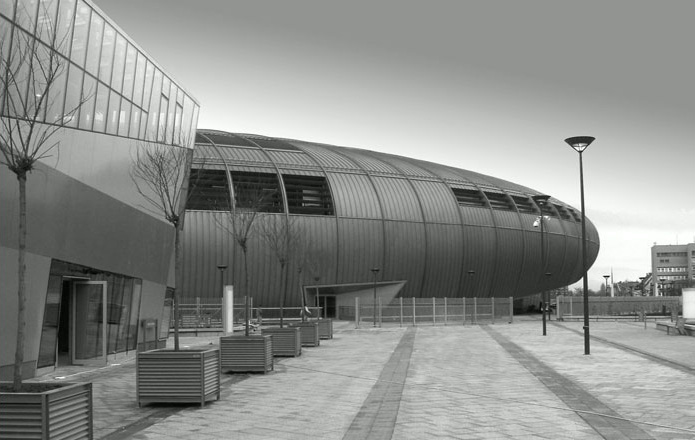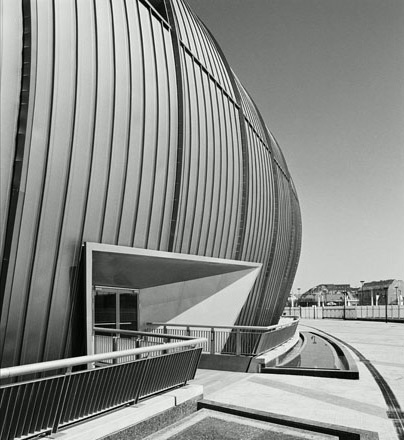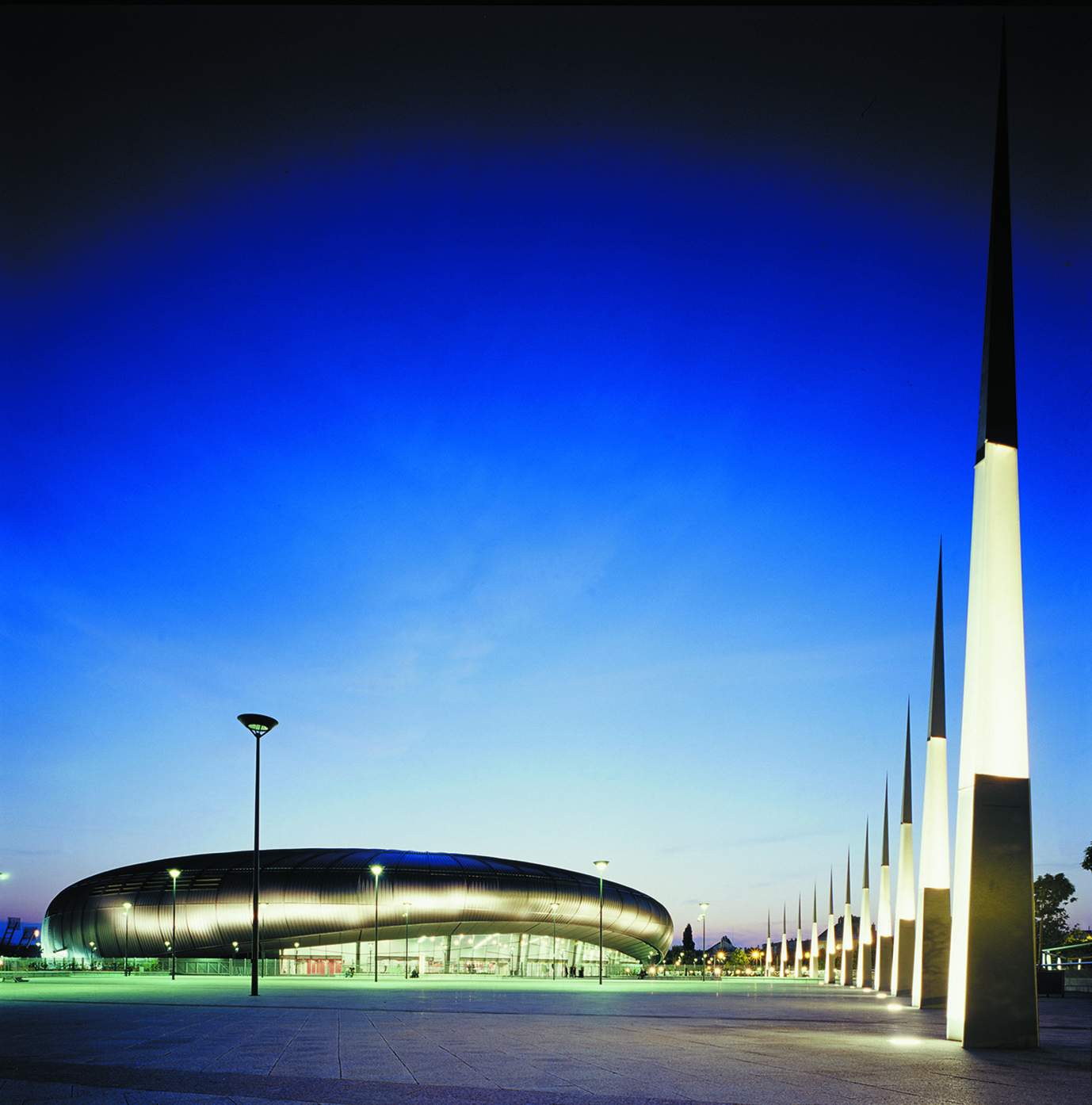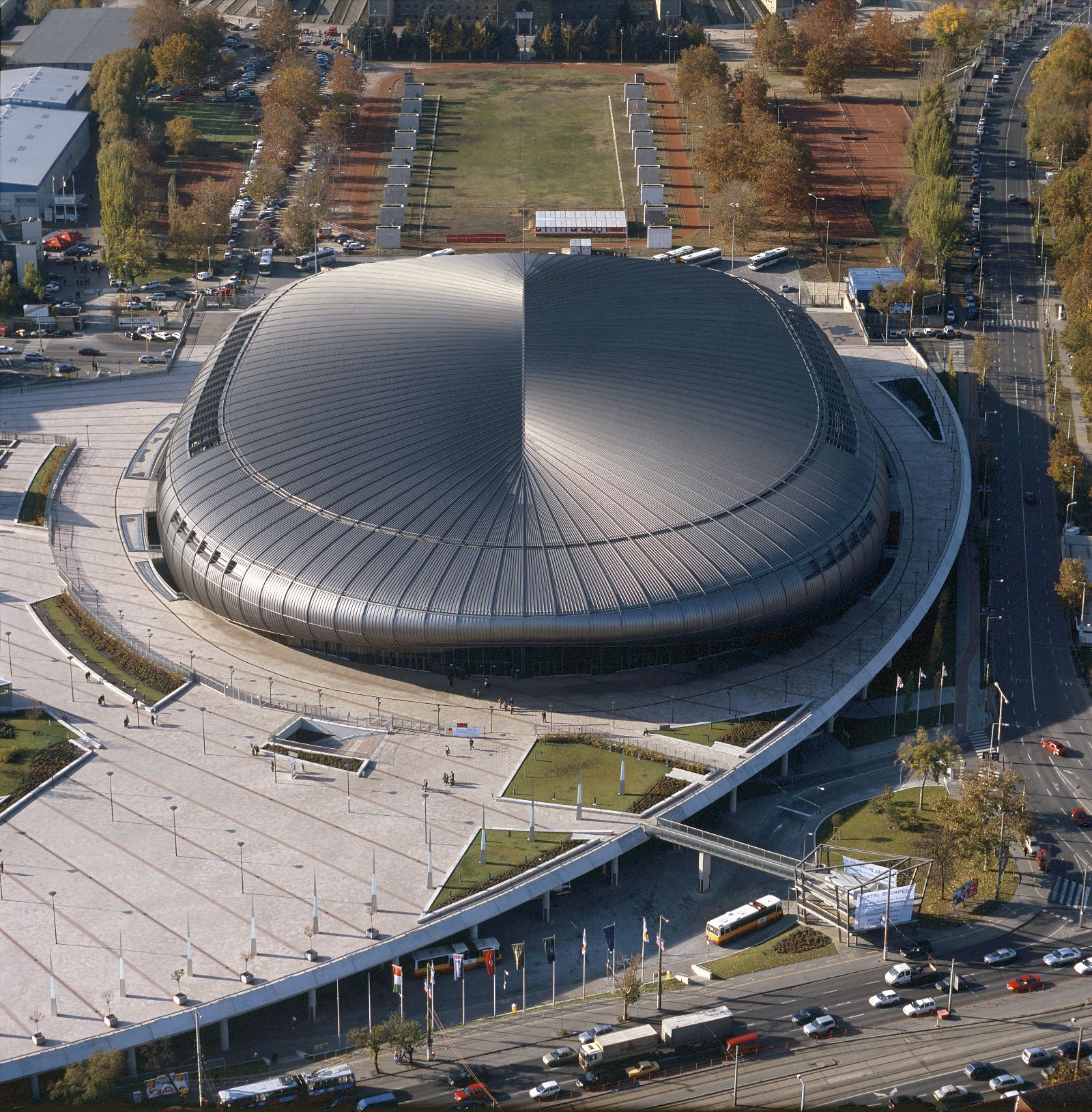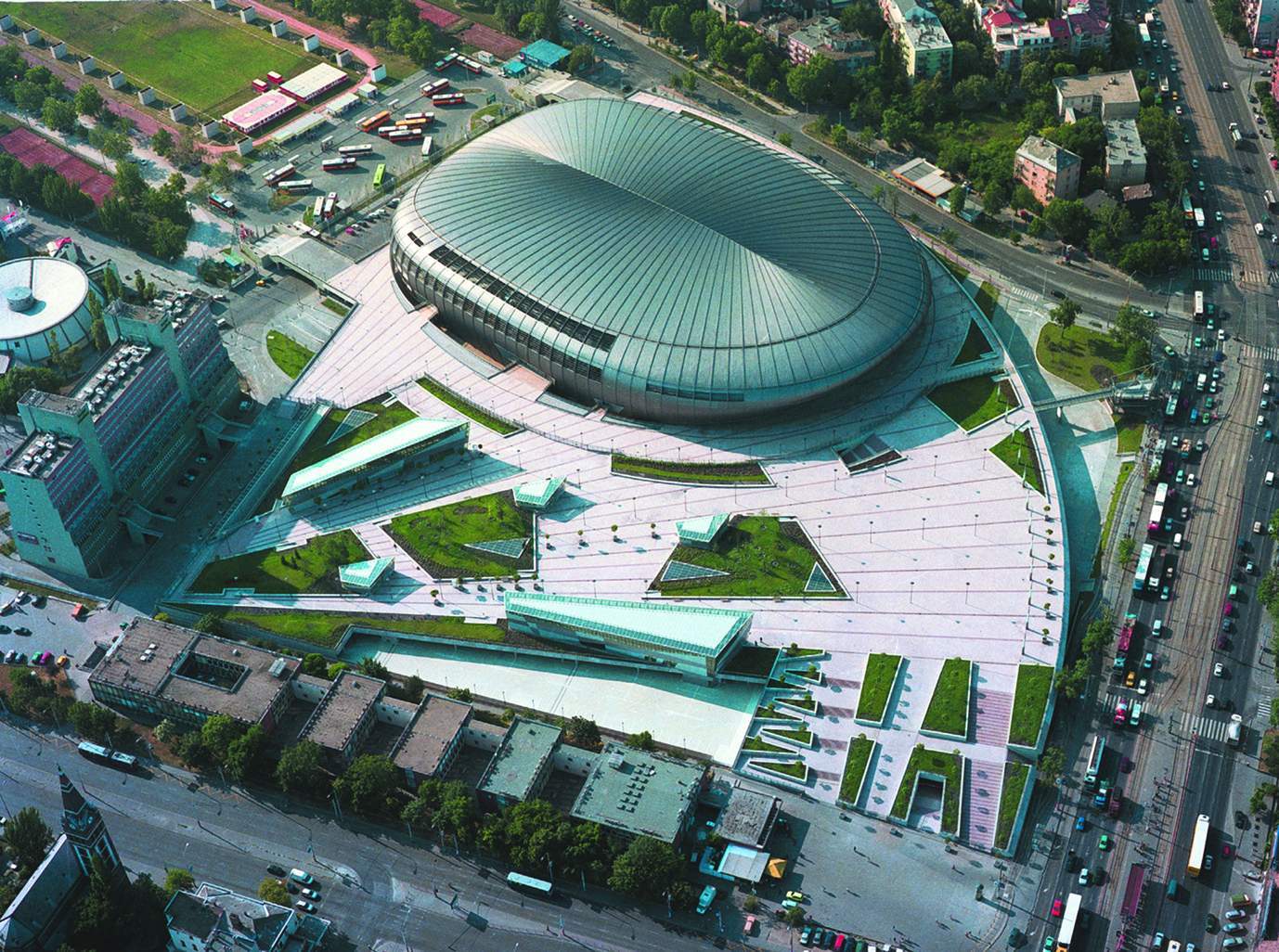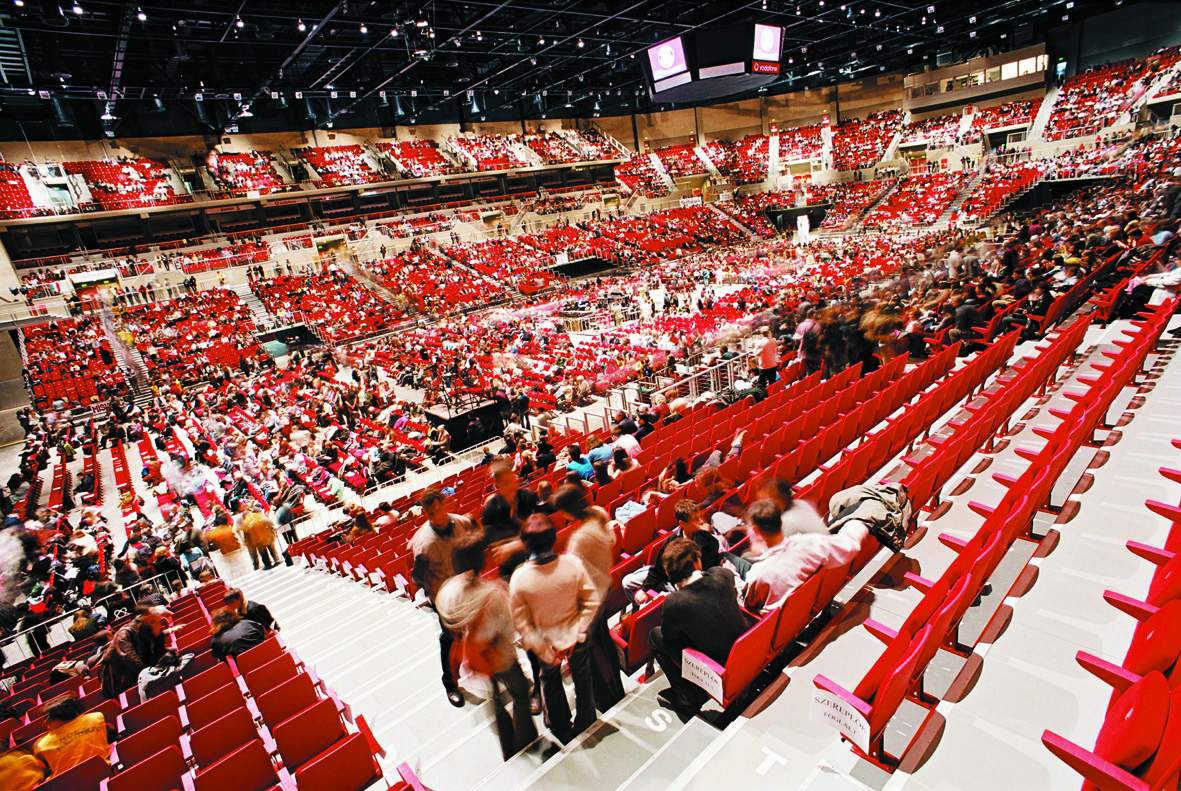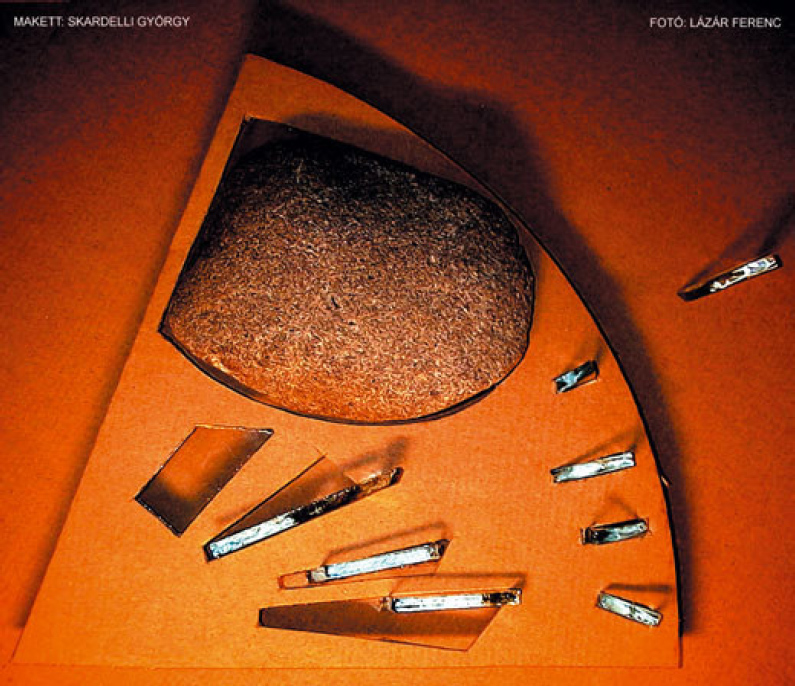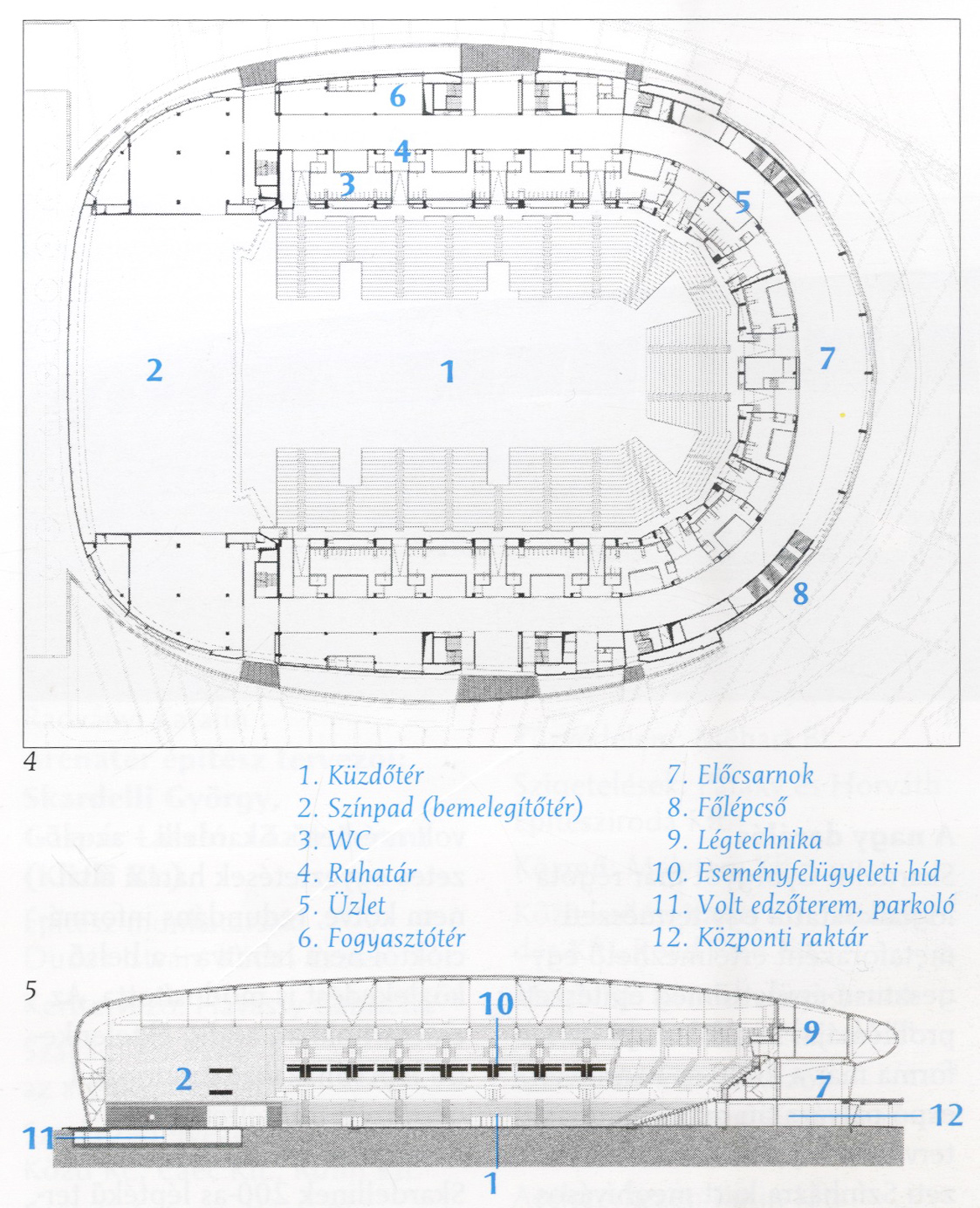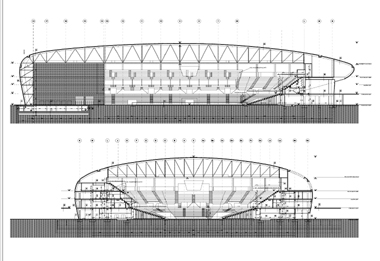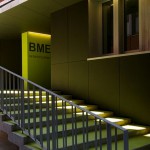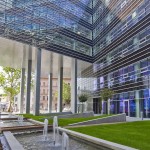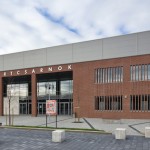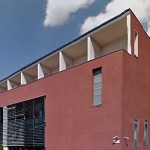The old Budapest Sport Arena (1982), designed by István Kiss Ybl prize-winner architect, was burnt down on 15th, December, 1999. It was an iconic building, whose replacement was a difficult task. In the beginning, the designers wanted to make an arena keeping the biggest fraction of the previous building possible. As the old, circle-like composition wouldn’t have been approptiate for the demands of our age, they decided to design an entirely new building.
- architects in charge: György SKARDELLI, Péter POTTYONDY - Közti Rt.
collaborating architects: Andrea Bálint, Zsolt Farkas, Zsuzsa Koncz, Tibor Molnár, Katalin Radványi - architects of the Arena-square: György SKARDELLI, László GÁSPÁR, Ferenc LÁZÁR;
collaborating architects: István DUDÁS, Eszter KÁDAS, Sarolta KOVÁCS NÁDAINÉ - year of design/construction: 2000-2001/2001-2003
- photography: © Zoltán BALOGH, Ferenc LÁZÁR, Attila POLGÁR, Ferenc SZTRAKA, Tibor ZSITVA, Közti Rt.
- → see the building on the map"hungarian architecture"!
One of the main pricipals in designing the arena space was the horseshoe-like composition of layout, as it could easily provide the space for different sized courts and in occasion of other programs they made it easier to convert the arena space as moving or installing the actual scenery.
The arcitectural problem of designing a ”one-gesture” building mass had been in Skardelli’s greatest interest for a long while. The final look became a gravel shape, which makes the enormous coliseum a delicate object. Aruond this, with a radial positioning, three smalland two big ”crystals” take place, in which the staicases, coffee shops, brasseries and ticket offices are placed.
It is also worth mentioning, that the designer did not only want to design a building, but beyond the designing program (and without considering the property lines) they came out with a large urban planning as well. According to this, the building was put on a ”platform”. The bus station and the two storey parking lot were placed below the platform, while the surface was preserved for pedestrians, giving back an urban space to the people in a busy traffic intersection like this one.
That way the Arena and it’s environment became also an iconic project, that can mark and form Budapest’s architectural image. It is not like a building on the stilted square. It is an iconic object, which is a worthy posterior of the burnt down BS.
translation: Enikő TÓTH
Publications in English:
printed:
Award:
Data:
- client: Rendezvénycsarnok Ingatlanfejlesztő és -kezelő Rt.
- scale (m2): 41000 m2
- The building on the homepage of the architect;

